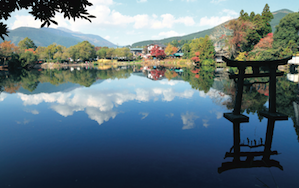IT MAY ONLY BE THE KOREAN STRAIT that separates South Japan’s shochu and South Korea’s soju but, in terms of global outlook, the spirits are oceans apart.
Soju is more akin to vodka – big brands with big ambitions, selling on a pitch of neutrality. While shochu can swing that way too, in the form of its mass-produced Korui, its crafted Otsurui style is where many producers are pinning international hopes.
Japanese whisky acts as precedent to shochu’s band of producers. In whisky it was the crafted styles that made an impression – who outside of Japan is familiar with the large groups’ volume brands, Suntory Kakubin and Black Nikka? So what does shochu have to do to repeat the trick?
“Shochu just needs to be marketed right,” says Wakana Omija, global brand development manager of Akashi-Tai shochu. “For the European audience, serving on the rocks is probably the best way to enjoy what each style of shochu has to offer. Commissioning somebody like Michel Gondry to make the commercial and James Bond to drink Shochu Martini in his next film will be big help.”
Stirred, not shaken (see How to make a Mizuwari, right) might not have the same ring – but drinking shochu with water, over ice, or straight up are elegant enough serves for the connoisseur. The starting point for most consumers though – once they have pegged the difference between shochu and sake (which is brewed not distilled) – will be Japanese restaurants. Served in the right setting, and ideally paired with Yakitori, shochu could garner a narrow but significant following.
Masafumi Ando, chief of Takara Shuzo’s London office, has visited 95% of the 650 Japanese restaurants in London. “The cost of marketing is a lot – education has to come first,” he says. “I present ideas to restaurants for Asian-themed cocktails.”
Ando is realistic about shochu’s ability to ever compete with the big categories, but a presence at Imbibe Live 2013 shows the UK restaurant and bartending fraternity are certainly listening. “Ten years ago we would never have come to a show like this but now it’s worth our while,” says Adrian Cohen of Tazaki foods, importer of Takara’s shochu.
Cohen reports that the past five years have seen a boom for the spirit in the UK – no longer are his shochu customers purely of Japanese origin. “In the past year or two, interest has really stepped up,” he says. Along with London, Takara also distributes its seven brands in France. “Paris is also exciting. Along with London it is the biggest shochu market,” says Ando.
Akashi-Tai shochu can be found in Germany, Hong Kong and Singapore. The UK, though, is its biggest and fastest-growing market. “I spent the past seven years in the UK planting the seeds and nurturing,” says Akashi-Tai’s Omija. “For the past three years or so Eaux de Vie has been our sole importer in the UK and it really took us to the next step and beyond. The timing was also right for this kind of product.”




